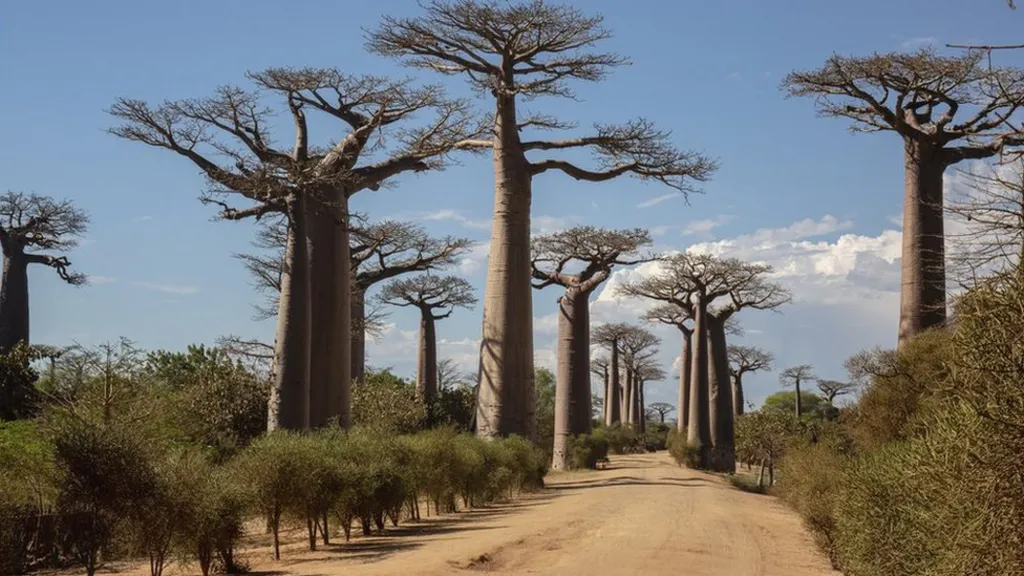The “Ancient Tree of Life” Explained

Scientists have traced the origins of ancient baobab trees to Madagascar, dating back 21 million years, according to DNA studies. Seeds from these trees were later dispersed by ocean currents to Australia and mainland Africa, resulting in distinct species.
The research team, including Dr. Ilia Leitch from the Royal Botanic Gardens, Kew, and Prof. Andrew Leitch from Queen Mary University of London, emphasizes the urgent need for increased conservation efforts. They warn that baobabs may be closer to extinction than previously.
Baobabs, known for their unique shapes and longevity, support a diverse range of animals, plants, and human communities. The study covered eight baobab species, with six in Madagascar, one across Africa, and another in northwest Australia. Researchers call for heightened conservation status for two endangered Malagasy species, including the giant baobab.
The trees, referred to as the “tree of life” or “upside-down tree,” can live for thousands of years, grow to enormous sizes, and store water in their trunks to survive dry seasons. Their fruits are considered a superfood, and their trunks provide fibers for ropes and clothing. The large white flowers attract bats for pollination, and baobabs serve as crucial nesting sites for birds.
This research was a collaborative effort between Wuhan Botanical Garden (China), Royal Botanic Gardens (Kew, UK), University of Antananarivo (Madagascar), and Queen Mary University of London (UK).